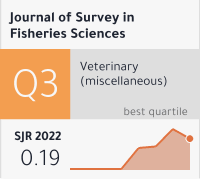The Role Of Lipopolysaccharide Modification By Amino Arabinose In Extreme Polymyxin Resistance In Serratia Marcescens
DOI:
https://doi.org/10.53555/sfs.v10i6.2295Keywords:
Lipopolysaccharide modification, aminoarabinose, polymyxin resistance, Serratia marcescensAbstract
Lipopolysaccharide (LPS) modification is a key mechanism that bacteria use to resist the action of antimicrobial peptides such as polymyxins. Serratia marcescens, in particular, has been known to develop extreme resistance to polymyxins due to the modification of its LPS with aminoarabinose. This essay aims to clarify the role of aminoarabinose in extreme polymyxin resistance in Serratia marcescens by evaluating the literature on this topic. The results suggest that aminoarabinose modification plays a crucial role in conferring resistance to polymyxins in this bacterium by altering the interaction between LPS and the polymyxin molecule. This finding provides valuable insights into the mechanisms of polymyxin resistance and may guide the development of new strategies to combat multidrug-resistant.









